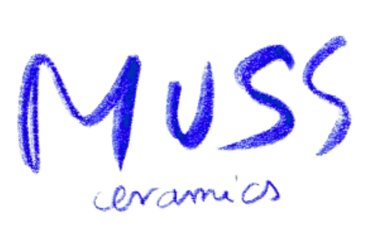"When will I receive my order?"
This is the most frequently asked question. Creating ceramics is a long and demanding process that consists of several key stages. Each of them plays a crucial role in the final outcome – both in terms of aesthetics and the durability of the pieces. Welcome to my world – I’ll walk you through the entire process.
Creating ceramics is a long process that requires precision and patience – from shaping the clay, through firings, to glazing. Every piece passes through my hands and is refined down to the smallest detail.
At this stage, the basic forms of the pieces are created. Each one is shaped by hand, which means no two are exactly alike. This is when the pieces begin to take on their character – subtle textures, irregularities, and tiny details appear, adding uniqueness to every item.
After shaping, the pieces need to dry completely. This stage cannot be rushed – if the clay dries too quickly, it may crack. For two weeks, the pieces are left in a well-ventilated space, where they slowly lose moisture.
* Sanding and cleaning – half a day
Once the pieces are dry, each one needs to be carefully smoothed. I remove sharp edges, uneven surfaces, and any excess clay. This stage is essential, as it affects both the final appearance and the comfort of using the ceramics.
* First firing – 12 hours (bisque firing)
The pieces go into the kiln for their first firing, known as the bisque. At around 900°C, the clay transforms into a durable yet still porous material, ready for the next stages of the process.
* Painting and glazing – 3 days
This is one of the most demanding steps. Each piece is hand-painted and coated with glaze, which gives it its color, shine, or matte texture. Glazing requires precision – a layer that's too thick may cause the glaze to run in the kiln, while one that's too thin won’t produce the desired effect.
This is also the moment when I decide on the final look of each piece – I select colors, combine techniques, and focus on every detail.
4o
SHAPING / DRYING
PAINTING
GLAZING
* Second firing – 12 hours
After glazing, the pieces return to the kiln for a second firing, this time at around 1250°C. During this process, the glaze melts and develops its final appearance – becoming glossy, matte, or satin.
*Muss is a brand I create on my own
Each piece goes through my hands from start to finish. With around 20 orders per month, I’m able to handle the entire production by myself. When there are more – for example, 100 – the process becomes much harder to manage alone. Additionally, if I’m preparing for a market or fair, I have to plan production well in advance. That’s why the number of current orders has a big impact on delivery times.
THANK YOU for every order, and I hope this explanation helps you better understand the entire process of creating ceramics – from clay to the finished piece.
